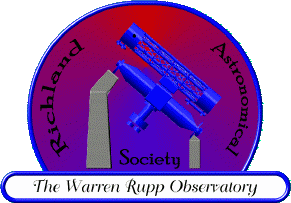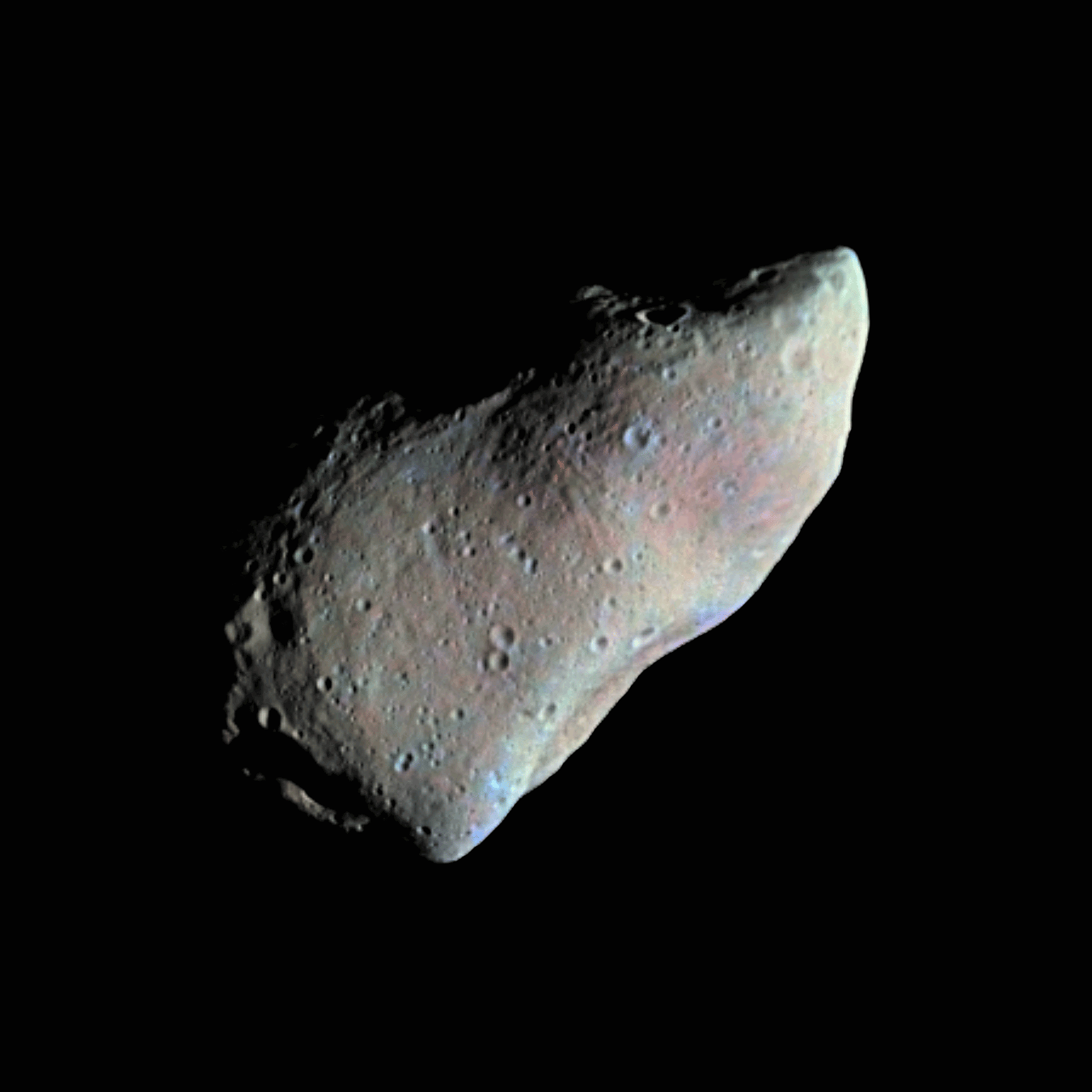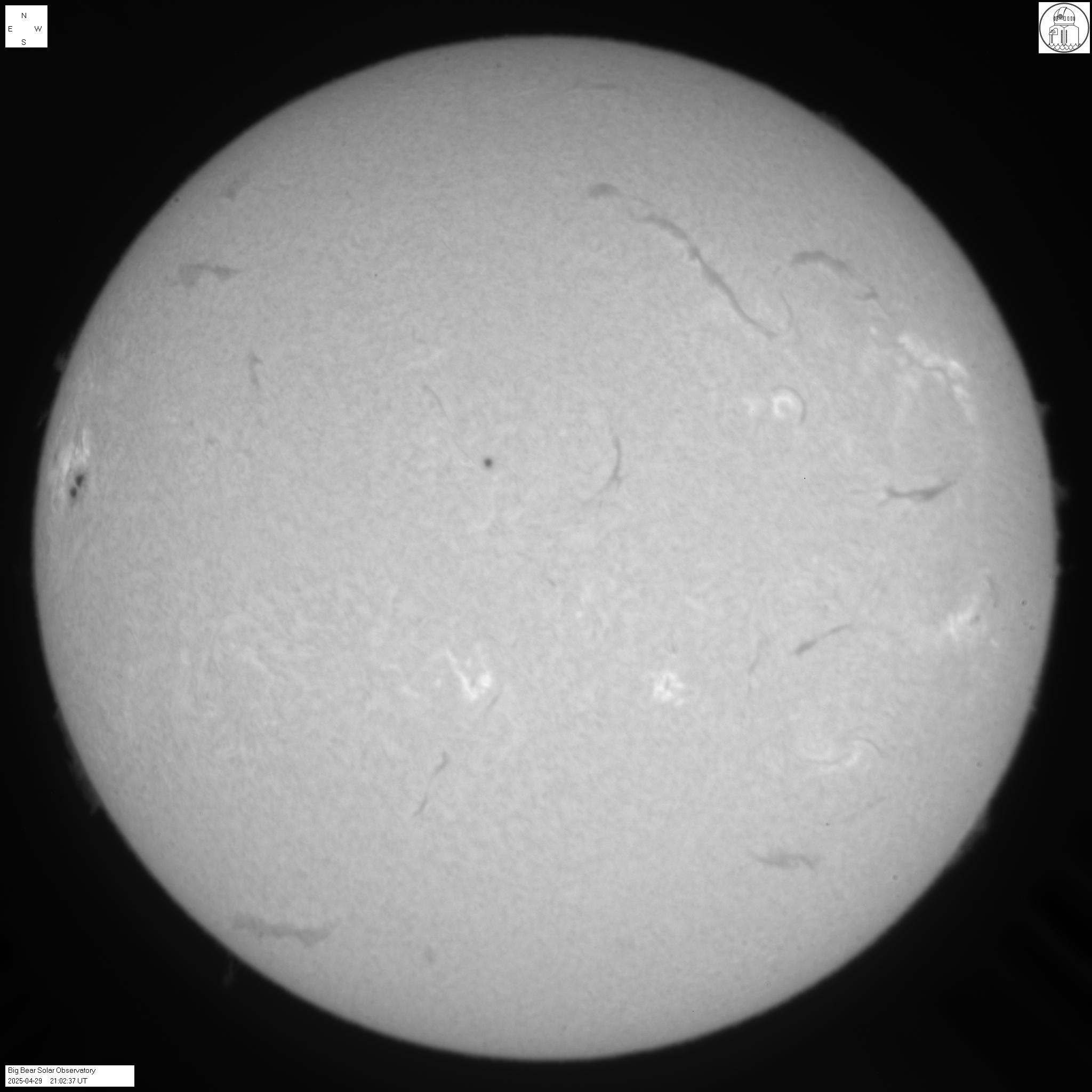



Greetings, everyone! Right now I'm sure you're all wondering "why" you've been given a link to the March issue of the M111, instead of being e.mailed a copy. Well, unfortunately for us all, our editor Andrea is currently very busy caring for Kristen, who is again scheduled for more surgery. (our prayers, love and best wishes go with you, girl...) I'm afraid I'm not as talented as she is at putting together the newsletter in a mailable format, so ya' gotta' just put up with the way I do it. We wish Kristen a speedy recovery!
Now let's rock...
Many thanks to all who attended the February RAS meeting... How wonderful it was to see it so well attended! (gosh, it was good to see you guys again...) Members in attendance were Terry McQuistion, Joe Forster, Mike Allen, Dan Everly, Tammy Plotner, Bruce Scodova, Dave Hartsel, Ken Hemmerly, John Neuman, Monty Meier and Larry "Doc" Heltzer.
The Ashland Public Library program will become a reality. Right now, Mike G. is coordinating the dates for it and will post it under the topic he opened on our WRO bulletinboard. All members are asked to help.
We will have a Messier Marathon Night at the Observatory. Our first scheduled date will be March 20th with a rain date on March 27th. While the event is not directly open to the public, any member wishing to bring or invite a guest may do so. Any member inviting a guest must take the responsibility of replying to the Messier Marathon Night topic on the bulletinboard (access through www.wro.org) and state who will be joining us so the Observatory Director has notes on who will be here. It would also be a polite move for members planning on attending that night to post as well.
March 6 will be our first "Public Night". In the past, our RAS meetings have been held on that night and we have often left the Observatory unattended in favour of more comfortable surroundings during cloudy weather. Let's just say "the times they are a'changing"... OK? From now until we vote otherwise, the Observatory will have RAS members present during Public Nights to greet our guests. I will make sure there are materials there to keep anyone entertained should they wish to visit for the evening, and any member should be responsible enough to give a tour. If the weather is good? Please keep in mind that folks would like to see through a telescope! At least one member qualified to run the 31" should be present... (And shame on ya' if you're not.) Bring your own scope, if you've a mind... And remember! These folks are our guests. ;) If it is cloudy? Like I said, there will be videos available as well as information to be passed out. At least one member should be there for a reasonable amount of time to show folks around and answer questions. Be a friend of the WRO and contibute your time...
There will be a Hidden Hollow Lite program this year!! Our dates have been approved for the third weekend of August and a link will be made to supply visitors with information. At this time, the fee will be $5 per guest per night. There will be primitive camping available in our area on a first come first serve basis. I am currently working on getting us some guest speakers at their own expense, and I appreciate any member who may know someone in the "astronomy world" to do the same. The Observatory will be open and on-line with an operator for our guests and unlimited use of the grounds for their personal telescopes. Because this is a greatly scaled down program, it will require a lot less work on our parts... But we will still need some volunteers! Again, I will posted a topic on the bulletinboard (http://www.wro.org/bulletinboard) to keep everyone informed and seek the help we need to make this a good program. I urge all members to realize this is how we make our operating expenses and plan on volunteering some of your time.
The Black Forest Star Party was also discussed. Wouldn't it be great to do something as a group? Right now, the tentative date for Black Forest is September 10, 11 and 12. I have opened a topic on the bulletinboard just for Black Forest so we can keep each other informed as to who plans on attending, and how and when we make reservations for our group.
It was brought to the membership's attention that the Dome is still in need of maintenance. Since the bulletinboard is a viable way of soliciting for help? Please feel free to open a topic discussing how we can go about doing this and ask for volunteers. It is important to all of us to help preserve the WRO and volunteer to help in any way we can.
Membership packets are currently under construction and the proper documents assembled. Not everything can happen at once, be we are off to a good start and they will be available in the very near future.
Once again, any member with an internet connection MUST REQUEST OBSERVATORY TIME VIA THE BULLETINBOARD. This is important, folks. It keeps the Observatory Director aware of when requests are being made. It keeps RAS members aware when other members are at the Observatory. It keeps FH in good relations with the RAS. Anytime you wish to access the Observatory or Observatory grounds for ANY reason... Make your request on the BB. Members failing to do so will be denied permission. Members who do not have internet access must take responsiblity for informing the Observatory Director via telephone so it can be posted to the Board. Members who have internet access, but are temporarily away from their equipment can contact any other registered member of the bulletinboard and have it posted.
We discussed furthering our willingness to submit to FH a statement declaring our name, address and telephone number to be current with the Secretary/Treasurer and to be willing to submit the proper information for a background check only if (and only if) FH deems it necessary. A lot of this is still in the planning and discussing stages, but the gist of it is we need to get everything current and submitted to both FH and the Observatory Director. It is not yet a policy of the RAS, but it was the general agreement of the members present that it is a good idea.
Other than that? All are welcome to write me if their notes or opinions on what was said differs from my own. We also discussed some things that were brought up for decision by the Board of Directors and a copy of the answers was submitted to all in attendance of the RAS February Meeting. I have been given editorial license on what news to make public or not... And I feel what was in that document is personal Club business and has no place being aired on an open forum. The decisions were made and they stand.
Submitted by: ~T



Welcome to the March edition of "Seeing Stars"! Are we all tired of the winter weather yet? Well, thanks to the cold, snow and ice, wind and rain many of us have found ourselves to be "armchair astronomers" in the evenings. If you, too, are looking for something new to do on the web, why not check out Patrick's Intergalatical Mystery Tour! Thanks to a tip from Mike G., you will find enough things on these pages to keep you "in tune" with Space! Enjoy... (and hang tough... because the stars of summer have returned to our morning skies!!)
Now let's head on out into the Cosmos, and see what we can find for YOU in the month of March!!
 |
Meteors |
There are a few minor meteor showers this month that may produce random and predicted activity. The Corona-Australids peach on March 16, and are active from the 14th - 18th. Although the southern hemisphere is favoured, it may produce randoms at a rate of 5 to 7 per hour. March 22 signifies the Camelopardalids, which have no definate peak but are the slowest recorded meteors at 7 kpm. Also on March 22 is the "March Geminids" - Discovered in 1973 and confirmed in 1975. They appear as slow meteors and generally produce up to 40 per hour. (yeah! this one will be a "no moon" show!) Try your hand this month at "radio meteor listening"! Good luck.... |
 |
Sun Dogs |
Also another interesting apparition that occurs more frequently during this time of year, the "sun dog" happens during those hazy, cold days. The picture on the left is a beautiful example! (click on the image to see the full size photo by Bob Fosbury.) These mock rainbows, and sometimes dual Sun appearances are all part of atmospheric phenomena and can be further studied by visitng Atmospheric Optics. Por amour du ciel!! |
 |
Asteroids |
How about something a bit different? Then why not try your hand at chasing a bright asteroid this month? Asteroid Ceres, at magnitude 6.9 should be an easy challenge for the backyard telescope as it moves through the constellation of northern Gemini this month. Give it a go! It's not far from Saturn. Tired of chasing Ceres? Then let's go for another in Gemini.... Hebe. At magnitude 9.1, Hebe will present more of a challenge. Still not enough? The let's have a go at Pallas in Cetus. It's magnitude 9.3 is still within range of most scopes. A bit harder? Then go for tiny Irene in northern Taurus. At magnitude 10.7 this should present a challenge even the best of us can't resist!! For very accurate locator charts, go to Heaven's Above and enter your area. Best of luck! (image courtesy of NASA) |
 |
The Moon |
There will be three chances in the month of March to spot this month's lunar challenge. Schroeter's Valley is a thin, bright feature which accompanies bright Crater, Aristarchus. It will be visible on the 3rd, 16th and 17th. Need a clue as to what to look for? Try this...  Of course, the Moon offers many wonderful opportunites for viewing and you can pick up some fine pointers from visiting Inconstant Moon. For those of you with a video camera? It's a nice challenge to try imaging craters, and I'm always interested in seeing your work! ("Lunation" image courtesy of NASA.) |
 |
Solar |
Our ever-active and ever-changing nearest "star" continues to be a fascinating target during the sunspot phase, using either safe solar projection methods or safe solar filtering techniques. The image to the right is real time and clicking on it will give you an image very close to what be seen through a telescope proper equipped for solar viewing. (if there is no image? hey! it's cloudy or dark... ;) For example, we had a wonderful sunspot just this last month! Check out AR564...  For more information go to "SpaceWeather" where you will find current sunspot numbers and aurora alerts. (daily image from Big Bear Solar Observatory) We are now moving into a good time of the year to spot auroral activity, please keep watch! |
As always, there will be lots of exciting things in the months to come... like more meteor showers and comets! And, of course, there are transits and occultations, as well as asteroids and eclipses to keep us busy! And I'm here to help keep you informed... If you have any questions on how and when to view any of these activites, please feel free to contact me and I'll be happy to help in any way I can.
But, for now, let's get out some star charts and pour us another cup of coffee, because I'd rather be galaxy hoppin' and it's....
OBSERVING TIME! Wishing you clear skies and Light Speed...~Tammy
